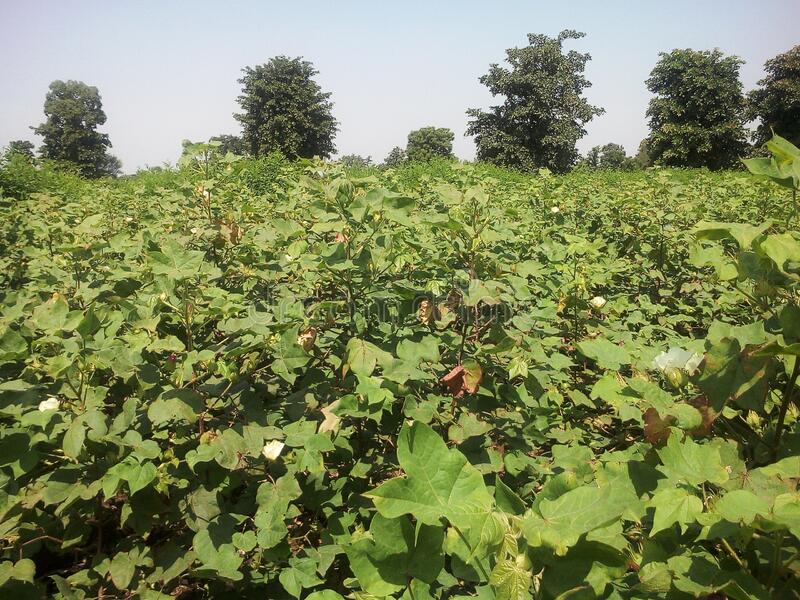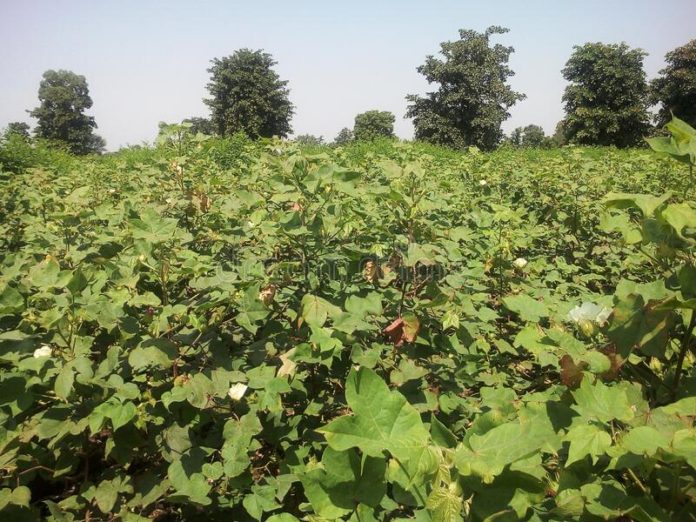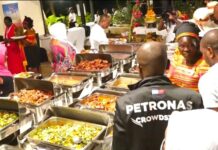By Okong’o Oduya
Busia County, Kenya: Farmers have been assured that BT cotton seeds will be available between the month of October and November this year.
Speaking during a farmers forum, Darlington Mutetwa, Business Development Manager at Mahyco International Kenya, the variety is already in demonstration farms at Alupe in Busia County, and Matuga in Kwale and soon it will be released to the public.
After launching the variety in Alupe early this year, Mutetwa said the Cabinet Secretary Agriculture Peter Munya formed the National Steering Committee to facilitate the revitalization of the cotton industry and advise the government on the adoption of BT cotton seed before it is released to the farmers.
He said there is a need to empower Kenya Agricultural and Livestock Organization(KALRO) to enable it to produce the seeds locally instead of importing them.
Dr. Charles Waturu the lead scientist to the BT cotton project said they are also focusing on planting cotton in East and Central cotton-growing regions including; Machakos, Kitui, Makueni, Mbeere, Tharaka Nithi, and Meru respectively to increase cotton production in the country.
According to him the rain pattern in the regions for the last 7 years is enough to support cotton farming, adding that after the Environmental Impact Assessment (EIA) before October this year they will go ahead and make the seed available to the farmers.

“We have started the EIA and we will complete it in October and I can confirm that these areas can successfully plant cotton in October. By that time we will be through with EIA and get the permit from the National Environment Management Authority,” he said.
Waturu asked Mahyco to avail BT Cotton seed on time and embark on farming when that time came.
“We are within the time limit. We are going to complete the EIA at the right time and plant the BT cotton and the hybrid variety at the right time in October and if we are late, nobody should worry. We can plant cotton successfully from the end of October to the end of November.” He noted
On ginnery, Dr. Waturu said the government is in the process of reviving collapsed ginneries countrywide to provide a ready market for the produce.
“The Distribution of ginneries in the cotton-growing areas of Kenya was very good. They collapsed due to one reason or another and those that are there, the equipment is obsolete and as the CS said, the government is in the process of reviving these ginneries to provide a market to the cotton production,” he said.
He revealed that through the National Steering Committee there is an initiative for the government to pump more money in modernizing and reviving ginneries in Kwale, Tharaka Nithi, Western, and Nyanza regions including the Mulwanda ginnery in Busia County.
“We are looking at a possibility of the government in reviving some ginneries at the Coast, Central, Western and Nyanza regions by either modernizing or come up with new ones,” he said
With the introduction of higher cotton production in the country, this will lead to opening up other cotton related industries that produce products such as oil that is now being imported.
“The fact that we are going to have a higher production of cotton in the country is also going to open opportunities for other industries related to cotton, including factories that produce oil for human and industrial use from cottonseed. There are other things that we can get from cotton other than fibers,” he said.
He however dismissed the possibilities of replanting hybrid seeds, adding that the moment you replant hybrid seeds you start compromising its quality.
“What you re-plant is not seed by any standard. We are discouraging farmers from planting what they have harvested whether in open-pollinated or hybrid and instead go for quality seeds when planting,” he said
According to the cabinet secretary, Ministry of Industrialization, Trade, and Enterprise Development Betty Maina, for many years Kenya has been the largest exporter of textiles and apparel under the AGOA program approximately 85 percent.
She says apparel export sales grew from Kshs. 57 million in 2014 to 68.5 billion in 2019 which made the sector the 4th largest export from Kenya after horticulture, tea, and coffee.
“Last year Kenya sold nearly 500 million dollars worth of goods to the United States of America out of that 85 percent was basically clothes.
Most of the textile products in the country is as a result of imported raw material from India and assuming that 60 percent of the eventual value of the fabric is imported that means we sent away nearly 350 million dollars buying goods outside the country adding that when there will be no longer importation of the raw material in textile industry it will open up the sector economically.” She said
She noted that Kenya has an estimated potential of 350,000 hectares suitable for rain-fed cotton crop production and 35,000 hectares of irrigated cotton that together can produce an estimated 200,000 metric tonnes (MT) of seed cotton.
The local production is currently about 21,000 bales (one bale = 180kg) of cotton annually against the domestic market demand of 140,000 bales per year with the potential to enhance installed capacity to 260,000 bales per year.
“It is for this reason that BT cotton was approved by Cabinet in December 2019 for commercialization to boost local cotton production to bridge the gap currently met by imports from neighboring countries. This will be complemented by the local production of certified cotton seed.” She said.
However, CS Maina noted that with the corona pandemic in the country has affected approximately 21,000 jobs in the textile & apparel sector were lost when garment factories, especially at the Export Processing Zones (EPZs) and small tailoring and Fashion & design businesses in Kenya closed their doors.














